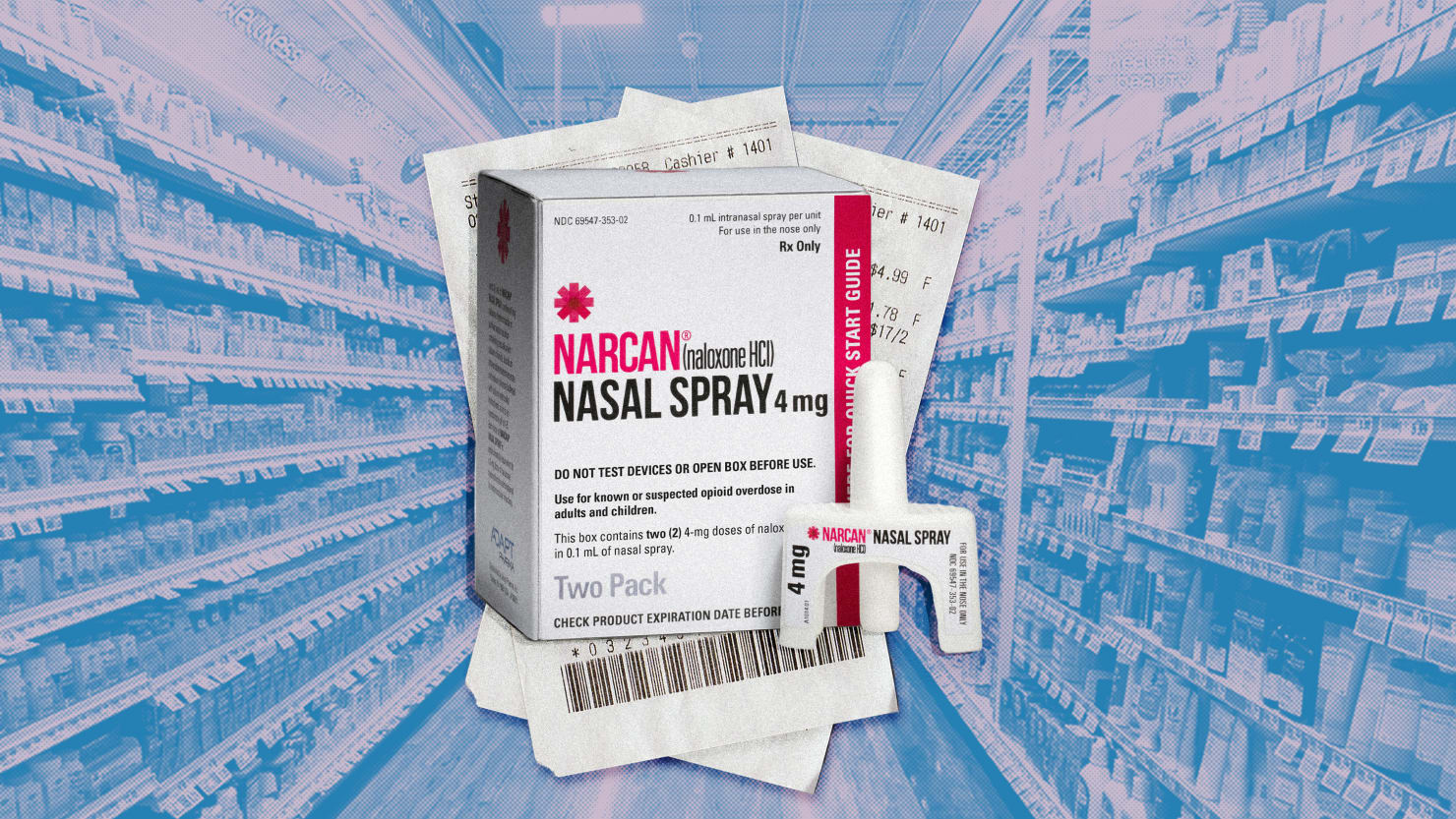In the past 13 months Antonio Sanchez has watched three of his friends overdose from opioids. The first two times, Sanchez, 22, was able to revive them with Narcan, the life-saving drug that reverses the effects of opioid overdose, that his girlfriend had given him when she returned from rehab.
Then last month a third friend overdosed. Sanchez, who lives in Texas, quickly realized he had used up all his Narcan, and panicked when his friend started nodding off. “I called 911 on speaker phone, and the whole time I’m doing CPR,” he told The Daily Beast. Thankfully the ambulance arrived quickly and the EMTs were able to give his friend Narcan, but Sanchez has not been able to replace his Narcan stash despite repeated efforts. “It’s really hard to come by. No one really just has it,” he said.
Since the COVID-19 pandemic, the opioid crisis that was already devastating the country has exploded and engulfed communities in ways few could have predicted. In 2021 more than 100,000 people died from opioid overdoses, according to the Centers for Disease Control and Prevention. Most of them were between the ages of 25 and 54 years old.
The Food and Drug Administration is currently weighing whether or not to make Narcan, the nasal spray produced by pharmaceutical company Emergent BioSolutions, available over-the-counter without a prescription. The FDA is expected to issue its decision on Mar. 29. Making Narcan over-the-counter would be a step in the right direction, public health experts told The Daily Beast—but they question how much impact it will actually have in stemming the tide of opioid overdose deaths, which will depend on unpredictable factors like cost, insurance coverage, and general awareness.
Naloxone, the generic version of Narcan, has been around since the 1950s. It is a “true antidote” to an opioid overdose, said Alexander Walley, a medical doctor and professor at Boston University who specializes in addiction research. Opioids like heroin and oxycodone stimulate receptors in the brain that produce effects including pain relief and euphoria, but they also suppress respiration, making it difficult to breathe. Overdose happens when there is not enough oxygen in the blood, causing the heart to stop and the brain to shut down.
Naloxone is “chemically very similar to an opioid,” Walley explained to The Daily Beast. It “swims up to the opioid receptor being simulated and knocks the opioid out of place,” blocking and reversing the effects.
“The people who are most likely to witness an OD are people who are also using drugs. By making Narcan over-the-counter it becomes more accessible.”
— Luther Elliott, New York University
Death from overdose can happen in a matter of minutes, so it is crucial to get naloxone to a person who is overdosing quickly in order to work. “The bulk of successful OD reversals with Narcan are carried out by peers,” Luther Elliott, a public health expert and substance abuse researcher at New York University, told The Daily Beast. “There’s a lot of research that proves this.”
Walley agreed: “The people who are most likely to witness an OD are people who are also using drugs,” he said. “By making Narcan over-the-counter it becomes more accessible.”
That is the hope, at least. Some states have already made Naloxone free or lost-cost, said Elliott. In Massachusetts, for example, Narcan is already available in pharmacies without a prescription.
Those states have all made addressing the opioid epidemic a priority, supporting efforts with “robust public health funding of naloxone,” said Walley. States are able to circumvent the FDA’s current prescription requirement through various initiatives run through their health departments, which buy naloxone in bulk and supply it at a heavily subsidized rate to pharmacies and substance abuse treatment and harm reduction programs. Those programs in turn hand naloxone out to people in the community, typically for free. For people without ready access, Remedy Alliance for the People is a national non-profit group that operates as a buyers-club to purchase low-cost naloxone in bulk, which they will send for free to anyone who requests it from them.
“Over-the-counter really opens up opportunities. It wouldn’t just impact accessibility in pharmacies, it will impact accessibility everywhere,” said Walley. “It will be easier for those programs to get it if it is over-the-counter than if the state is requiring a prescription.”
But over-the-counter is just half the equation. Making Narcan available without a prescription means very little if people are not able to afford it. And it is expensive: Out of pocket, Narcan costs anywhere between $60 and $100 for two standard doses which are packaged together. “The costs are not disappearing. We saw a rise over the pandemic,” said Elliott.
But to borrow overused Silicon Valley parlance, allowing non-prescription Narcan could actually drive costs down by incentivizing similar products to enter the market. Walley noted that when Narcan was first introduced, the retail cost was $150. But between then and now “there have been multiple new suppliers or makers of these Alloxan that have come online,” and “the public interest price has gone down by almost 50 percent” he said
In addition to making Narcan potentially over-the-counter, the FDA recently fast-tracked two more naloxone products, including another nasal-spray produced by Amphastar Pharmaceuticals.
“Over-the-counter really opens up opportunities. It wouldn’t just impact accessibility in pharmacies, it will impact accessibility everywhere.”
— Alexander Walley, Boston University
Ultimately, however, one of the biggest consequences to making Narcan over-the-counter may be cultural. One of the biggest reasons Narcan isn’t already available everywhere is stigma, said Walley. Having to ask the pharmacist can be a significant deterrent. “Its very similar to birth control and other stigmatized health products where you have to ask the pharmacist versus just pick it up off the shelf,” he said. “It’s a very different experience. And there’s lots of data that shows that that is a barrier.”
In states without strong harm reduction programs, Narcan has traditionally been supplied by first responders, including police and emergency medical technicians, who are only called when the person is already in danger. But “the time it takes waiting for an ambulance can be life or death,” said Elliott. “In people with a history of respiratory illness, which a lot of long term opioid users have, it’s even less.”
Even if the police get there in time, there is no guarantee that they will administer Narcan. It’s largely at their own discretion. A 2022 study, including this one by criminal justice researchers at Research Triangle International, published in 2022, have shown that police officers often hold a variety of negative attitudes and misconceptions about Narcan, which influence their willingness to dispense the drug.
“The demonization of naloxone operates on the assumption, on the incendiary claim that giving people the means to not die, means we are condoning it.” said Elliott.
That’s in spite of the fact that the real effect of Narcan, said Elliott, is to send a person into an accelerated detox, which is a very unpleasant experience. Receiving a life-saving dose of Narcan is not like taking a mulligan.
“The demonization of naloxone operates… on the incendiary claim that giving people the means to not die, means we are condoning it”
— Luther Elliott, New York University
“[It’s] extremely disorienting, you don’t know happened, you don’t know why you’re there,” said Katelyn Reese, from Florida, who woke up in the emergency room last year after accidentally overdosing on fake prescription opioid pills. “It’s just like a nightmare, but it did save my life.” Reese, 24, is currently in recovery.
“The disparities that exist everywhere else in health care are still there,” said Walley. It is harder for people in rural areas, who may live far from any treatment programs or hospitals, to get Narcan. Racial and ethnic communities historically underserved by the health system or targeted by law enforcement are also far less likely to have access to Narcan, and are more likely to be arrested after calling 911, in spite of Good Samaritan laws that are supposed to protect them. A new FDA ruling that makes Narcan over-the-counter could be a big step forward in remediating these inequities.
Along those lines, Elliott emphasized that making Narcan available over-the-counter would be “an important symbolic victory” which might “outweigh its practical value.
“Even if this doesn’t open the door to much greater access, the normalization of Narcan is hugely important,” said Elliott. “It should be next to the epi-pens.”



